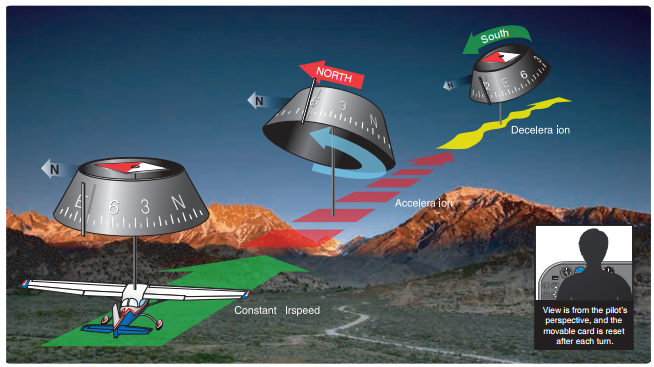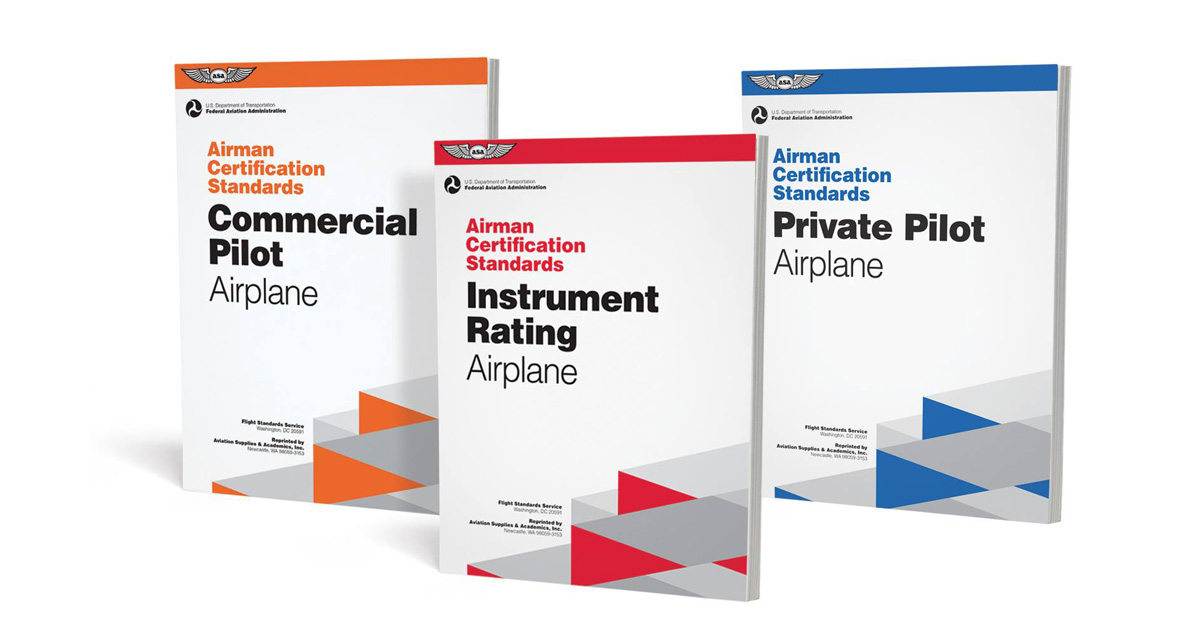The magnetic compass is the most basic of all instruments you will find installed in your aircraft and is required under both Visual and Instrument Flight Rules (VFR and IFR). The function and purpose of a magnetic compass installed in an aircraft is no different then one you might use on a weekend hike with your friends. However, the design elements of your aviation compass may differ from one you might pick up at your local sporting goods store. In addition, there are some errors you should be familiar with in relation to a magnetic compass, many of which are unique to the compass being installed in an aircraft.
The compass consists of a float, which is free to turn on a hardened steel pivot that rides in a glass bearing. There are two small bar magnets attached to the bottom of the float, and a calibrated card is mounted around the float. The float assembly rides in a bowl of compass fluid, which is a highly refined kerosene-type liquid. The calibrated card is visible to the pilot through the glass front of the bowl, and the direction the aircraft is headed is read on the card opposite the vertical lubber line just behind the glass. The magnetic compass is subject to several errors and limitations:
Variation—This is the error caused by the compass pointing toward the magnetic north pole, while the aeronautical charts are oriented to the geographic north pole. Variation is not affected by changes in heading, but it does change with the location on the earth’s surface. Aeronautical charts show the amount of variation correction to be applied.
Deviation—This is the error caused by local magnetic fields produced by certain metals and the electrical systems within the aircraft. Deviation error is corrected for by “swinging” the compass. The aircraft is aligned with the directional marks on a compass rose on the airport, and the small magnets inside the compass housing are rotated to minimize the error between the compass reading and the direction of the mark with which the aircraft is aligned. Corrections are made on the four cardinal headings, and the errors are read every 30°. A compass correction card is made for each specific aircraft and installed near the compass to show the pilot the compass heading to fly for each magnetic heading. This error can be exasperated by pilot actions—be careful not to put metal items up on the dashboard (like a kneeboard) as the additional metal can affect the compass deviation error.
Magnetic dip error—This error is caused by the compass magnets pointing downward as they align with the earth’s magnetic field. This downward pointing is caused by the vertical component of the field, and is greatest near the magnetic poles.
Northerly turning error—This error is caused by the vertical component of the earth’s magnetic field. When flying in the northern hemisphere, on a northerly heading, and banking in either direction to start a turn, the vertical component of the magnetic field pulls on the north-seeking end of the magnets and rotates the compass card in the direction opposite that of the turn being started. When flying on a southerly heading, and banking in either direction to start a turn, the vertical component pulling on the magnets rotates the card in the same direction as the turn is being made. The card moves in the correct direction, but at a rate greater than the actual rate of turn.
Southerly turning error—When turning in a southerly direction, the forces are such that the compass float assembly lags rather than leads. The result is a false southerly turn indication. The compass card, or float assembly, should be allowed to pass the desired heading prior to stopping the turn. As with the northerly error, this error is amplified with the proximity to either pole. To correct this lagging error, the aircraft should be allowed to pass the desired heading prior to stopping the turn. The same rule of 15° plus half of the latitude applies here (i.e., if the airplane is being operated in a position around the 30° of latitude, the turn should be stopped 15° + 15° + 30° after passing the desired heading).
Acceleration error—This error is caused by the center of gravity of the compass float being below its pivot. When the aircraft is flying in the northern hemisphere on an easterly or westerly heading and accelerates, the rear end of the float tips upward, and the magnetic pull on the compass magnets causes the card to rotate and indicate a turn toward the north. When the aircraft decelerates on an easterly or westerly heading, the rear end of the float dips down and the magnet is pulled in the direction that rotates the card to indicate a turn toward the south. This acceleration error does not occur when accelerating or decelerating on a northerly or southerly heading.
When making turns by reference to the magnetic compass, these corrections should be made:
- If you are on a northerly heading and start a turn to the east or west, the indication of the compass lags or shows a turn in the opposite direction.
- If you are on a southerly heading and start a turn to the east or west, the indication of the compass leads the turn, showing a greater amount of turn than is actually being made.
- The amount of lead or lag depends upon the latitude at which you are flying. For all practical purposes, the lead or lag is equal to approximately 1° for each degree of latitude.
- When rolling out of a turn, using a coordinated bank. Start the rollout before the desired heading is reached by an amount that is equal to approximately one-half of the bank angle being used.
Two very useful acronyms to help you remember a couple of the compass areas are UNOS and ANDS:
UNOS: Under Shoot North and Overshoot South. This is used to help you remember northerly turning errors.
ANDS: Accelerate North Decelerate South. Discussed above, is an easy way to remember acceleration errors.








